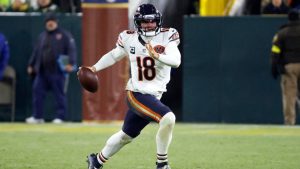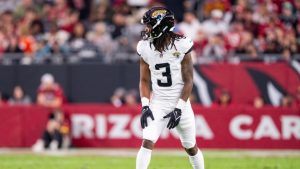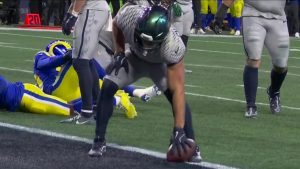Tua Tagovailoa stumbled to the ground, his legs wobbly and unable to walk to the huddle after banging his head Sunday. He was carried off the field by stretcher after another hit caused his head to violently slam against the turf and his hands to freeze up Thursday night.
The Dolphins said the third-year quarterback was conscious and had movement in all his extremities. He was taken to University of Cincinnati Medical Center but was released and expected to return to Miami with the team.
``It was a scary moment. He was evaluated for a concussion and he's in the concussion protocol,'' Dolphins coach Mike McDaniel said.
Some who watched the scary injury want to know why Tagovailoa was playing just four days after his quick return Sunday prompted a joint review by the NFL and NFL Players Association.
Many former players were critical of the decision to allow Tagovailoa to return against Buffalo and start against Cincinnati.
``Player health and safety is at the core of the union's mission,'' the NFLPA wrote on Twitter. ``Our concern tonight is for Tua and we hope for a full and speedy recovery. Our investigation into the potential protocol violation is ongoing.''
NFL executive vice president Jeff Miller said the review usually takes a week or two.
``Every indication from our perspective is that it was,'' Miller said about the team and its doctors following concussion protocol on Sunday. ``I know the player, the coach and others have spoken to this. And we are engaged in that review now. So we'll come back with a formal answer to that question, something that we want to engage in.''
Before the game, Chris Nowinski, a founder of the Concussion Legacy Foundation who played football at Harvard, wrote on Twitter: ``If Tua takes the field tonight, it's a massive step back for concussion care in the NFL. If he has a 2nd concussion that destroys his season or career, everyone involved will be sued and should lose their jobs, coaches included. We all saw it, even they must know this isn't right.''
HOW WAS TAGOVAILOA CLEARED TO RETURN SUNDAY?
Tagovailoa appeared to be disoriented by what the team originally said was a head injury after taking a hard hit from Bills linebacker Matt Milano late in the first half. He missed just three snaps and returned after halftime. Tagovailoa and the team said a back injury was the reason for his instability after the hit and he wasn't in concussion protocol. He was questionable to play on Thursday but started the game.
WHAT IS THE NFL'S CONCUSSION PROTOCOL?
A player who exhibits or reports symptoms or signs suggestive of a concussion or stinger enters protocol.
During each game, independent certified athletic trainers (ATC spotters) monitor the players on the field. If they see an impact to the head, they call a timeout and the player must be removed from the game, examined and evaluated. Team trainers, coaches or physicians, teammates, NFL game officials, sideline unaffiliated neurotrauma consultants (UNC) or booth ATCs also can initiate the protocol.
Any player in concussion protocol undergoes a six-step evaluation by a team physician and UNC to determine the severity of the injury and whether or not they're fit to return to the field. The final step is a neurological evaluation featuring a cervical spine exam, including range of motion/pain, evaluation of speech, observation of gait, eye movements and pupillary exam.
If any elements are positive, inconclusive or suspicious of concussion, the player is escorted to locker room.
In the locker room, a team physician and UNC conducts a full neurological exam and complete NFL Standardized Concussion Assessment Tool.
If abnormal, the player doesn't return to play, undergoes periodic evaluation by a medical team and has a follow-up neurological exam.
The league instituted the system in 2011 after Cleveland Browns quarterback Colt McCoy took a helmet-to-helmet hit in a game and returned without being tested for a concussion. The Browns said that the team's trainers didn't see the hit because they were tending to other players and that no one told them about it. After the game, McCoy was diagnosed with a concussion.
WHAT IS FENCING RESPONSE?
According to healthline.com, ``when a person experiences an impact that's strong enough to cause traumatic brain injury, such as a concussion, their arms often go into an unnatural position.''
Tagovailoa appeared to take that position, his fingers flexed awkwardly in front of his facemask for several seconds as he laid on the turf.
``The fencing response is often seen when a player is knocked down or knocked out during full-contact athletic competitions such as football, martial arts, boxing, rugby, and hockey,'' per healthline.com.
It happened to Los Angeles Chargers tight end Donald Parham during a Thursday night game against Kansas City last Dec. 17. Parham was removed on a stretcher and stayed overnight at a hospital for observation after being diagnosed with a concussion.
WHAT'S NEXT FOR TAGOVAILOA?
The severity of Tagovailoa's concussion is not known, but it's seemingly encouraging he was allowed to fly with the team. He must undergo a five-step process before being allowed to take the field again. The fifth phase is a full practice followed by clearance from the team physician. After that, he must be examined by an independent neurological consultant.






 2:20
2:20